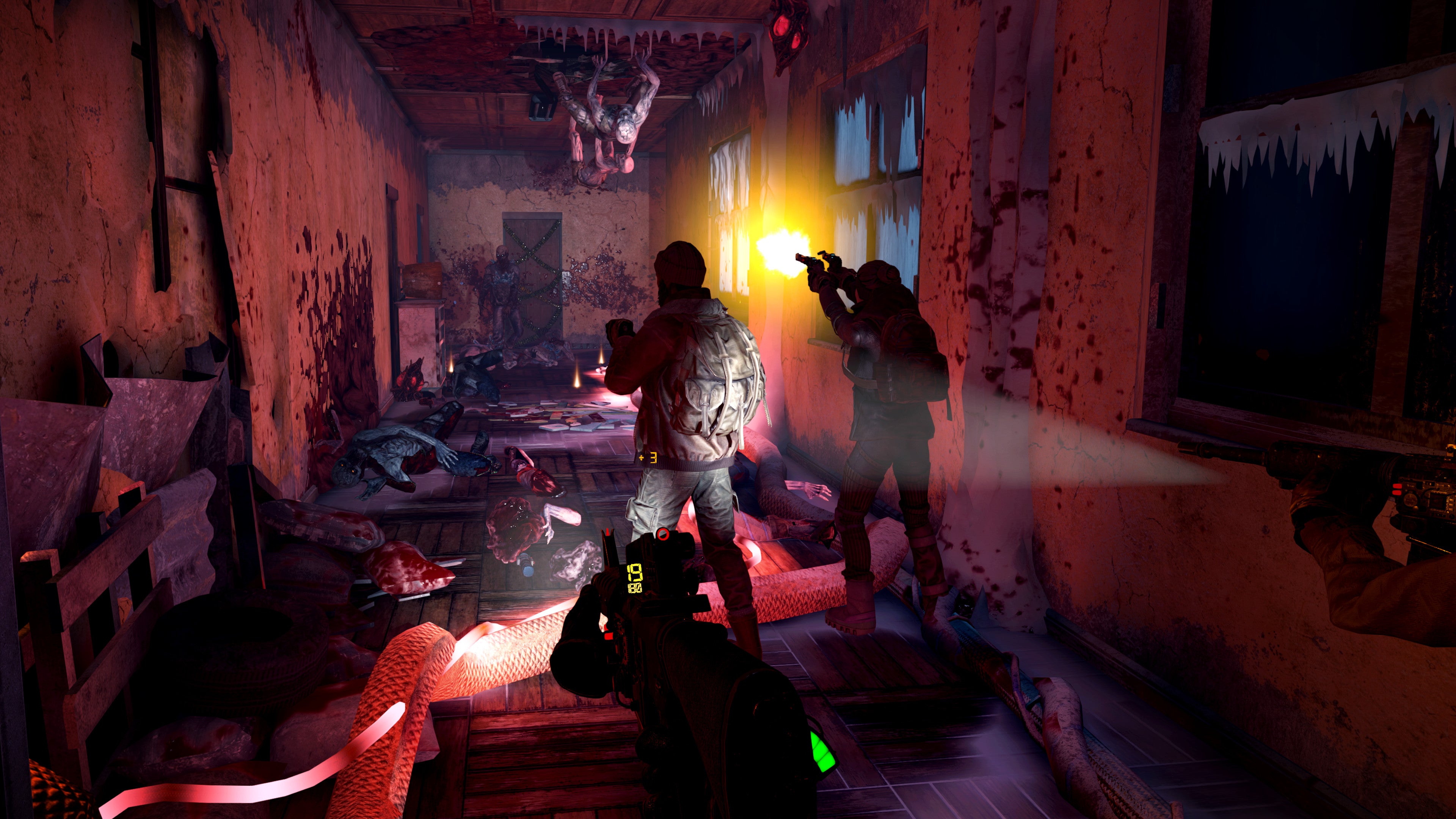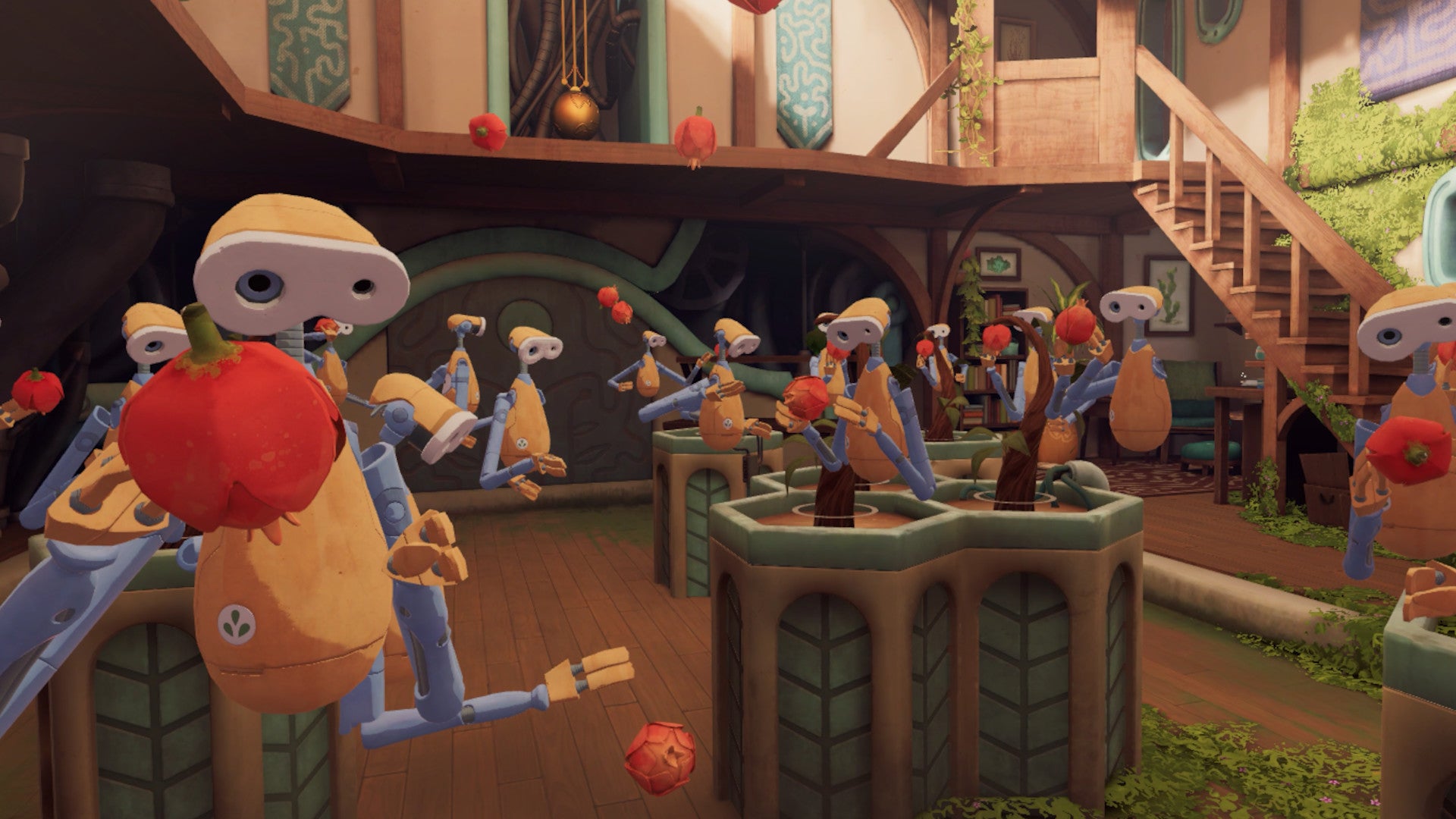First though, it’s time for a more general bit of stocktaking. 2022 was a big ol’ shrug of a year for VR gaming. Which is not to say it was bad, plenty of fun and interesting games launched in the last twelve months, one of which I’d probably put in my personal top ten. But from both a hardware and software perspective, nothing released this year is likely to shift the needle. The most notable VR hardware to drop this year was the Quest Pro, Meta’s premium headset that, while functional as a gaming device, isn’t really geared toward your average consumer. It does technically offer some significant improvements over the Quest 2, like face-tracking and full-colour mixed reality. But those improvements simply aren’t worth the “oof”-inducing price. Outside of that, the only other notable headset released this year was the Pico 4. Pitching itself as an alternative to the Meta Quest in previews, with similar specs and price-point, it had some pretty good buzz in the runup to release. Sales, however, have reportedly disappointed its creators. As for games, on both Quest and Steam, your top-selling VR titles released in 2022 include Among Us VR, BoneLab, and After The Fall. Decent titles, all three, but none would have you rushing out to blow £400 on a screen for your face. As for the major VR news stories of 2022, the year was largely overshadowed by Meta’s painfully embarrassing attempts to convince the world that the Metaverse is going to be a thing. At this year’s Meta Connect, Mark Zuckerberg had the air of an Enron executive desperately trying to convince everyone that the people pounding on his door are in fact adoring fans and not a conga-line of furious shareholders yearning to shake him by the ankles, while Meta Horizon’s infamous leg tweet will be forever burned into my memory. Yet Meta’s woes stretched far beyond some badly pitched marketing. Meta has reportedly lost $10 billion in its VR and AR department, a figure that former CTO John Carmack said made him “sick to my stomach”. Meanwhile, the company was struggling to get its own employees to use Horizon Workrooms, the business oriented bit of Meta’s metaverse project. All of this has culminated in a large and bitter round of layoffs, with 11,000(!) people losing their jobs, and accusations that Zuckerberg’s obsession with the metaverse will “kill the company”. There was some good news amid the chaos. A proper Quest 3 is on the way, likely coming next year. Also, as of June this year, Meta had sold an estimated 15 million Quest 2s, which means that, combined with all the other headsets floating around out there, VR now has a firmly established user-base for developers to sell their games to. That’s still a much smaller user-base, than say, PS4 or Switch (or indeed, regular PCs) but it does mean you can make a VR game and have a decent shot of it selling well. To give an example, After The Fall, a four-player cooperative VR game from the creators of Arizona Sunshine, earned $1.4 million within 24 hours of launch, more than Arizona Sunshine did in its first month. In short, despite Mark Zuckerberg’s best efforts, VR gaming is in a pretty healthy place right now. The market remains only a fraction of the size of your regular flatscreen games, and the extra inconvenience of VR means it will likely never lead the charge in video games. But we’re not seeing a repeat of VR in the 1990s. The tech works. The games are good. VR is here to stay. And while this year has been quiet compared to 2020 or 2016, next year is looking a lot more interesting. The biggest stuff is all happening over on PlayStation – at least until we find out more about the Quest 3. But even outside of that, there are some exciting games on the horizon. Saints And Sinners: Chapter 2 - sequel to what might be the best full-fat VR gaming experience outside of Half-Life: Alyx – is already out on Quest 2, and launches on PC VR in February next year. Saints And Sinners’ developer Skydance Interactive is also working on a snazzy-looking fantasy adventure called Behemoth. NDreams’ Ghostbusters game looks like it might be a riot. Low-Fi aims to give you the closest you’ll get to Blade Runner in VR, and I also like the look of Pirates VR: Jolly Roger. I imagine Meta’s got some stuff in the tank, for its full Quest 3 reveal as well, and who knows what surprise magic Valve might bring to the table in 2023.
JOLLY SAINT RICK’S VR CHRISTMAS GIFT GUIDE
Ho ho ho! Jolly Saint Rick here. Can’t quite manage the long white beard yet, but I’ve got the waistline and supernatural consumption-rate of sherry neatly covered. Anyway, if you’re looking for a new VR game for yourself or a significant other this Christmas, here are three excellent titles from this year that I would heartily recommend.
The Last Clockwinder
The Last Clockwinder is by far my favourite VR game of 2022, because it does something I’ve never seen in a VR game before. It’s a first-person puzzler in which you build elaborate Rube Goldberg machines using your own body. To explain, the game enables you to record your body’s own movements, then lets you spawn cute little robots that will play those movements on a loop. You use this system to create chains of robots performing different actions in a sequence. For example, you might record yourself picking up an object and throwing it across the room, then rush to the opposite side of the room to record yourself catching that object and placing it in a storage container. It’s super novel and equally fun, all wrapped up in a gentle story about you trying to save a big magic tree.
Wanderer
Another game heavily oriented around clocks, although in this case it’s a time-travelling watch that talks. Wanderer sees you striving to avert an apocalypse that’s already happened by travelling back to different time periods to alter the course of history. Interactively it’s a fairly standard VR puzzler, with lots of rummaging through rooms and fiddling with highly tangible objects and contraptions. But the time-travelling conceit adds an entertaining dose of novelty, as you must frequently transport objects from one time period into another to solve the puzzles. It’s also one of the prettiest VR games around outside of Half-Life: Alyx, with impressive environments and pleasingly detailed interiors. I found the watch’s Southern Gentleman shtick to be a tad irritating, but that didn’t stop me from enjoying this ambitious and extremely lush adventure.
Moss: Book II
Although I’ve highlighted the sequel here because it came out this year, both Moss games are well worth your time for the way they synthesize first-person VR and third-person platforming. You assume the role of a godlike narrator who must guide a little mouse called Quill through a gorgeous miniature fantasy world. But it’s how Moss plays that makes it special. You control Quill like a regular platforming character, using the analogue stick to move her around, and the buttons to jump and fight enemies. At the same time, you also use your hands to manipulate objects in the environment, solving puzzles and moving obstacles out of Quill’s way. The sequel is simply a bigger, better version of the original. But the first game’s only real problem was that it was quite short, so a sequel which delivers more of the same is just dandy.




